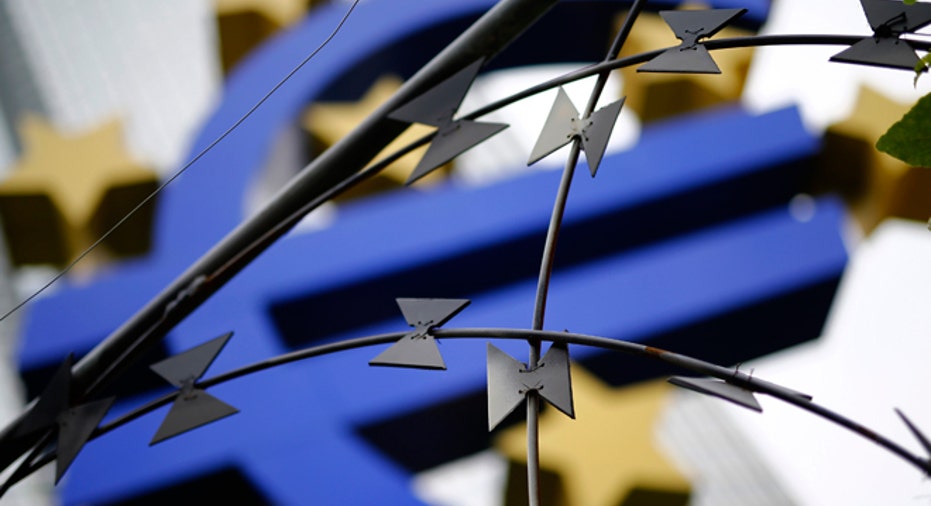European Central Bankers Poised for QE Program

Despite a lingering debate in the U.S. over the efficacy of quantitative easing, European central bankers appear poised to announce their own bond-purchasing program on Thursday in an effort to kick-start that region's faltering economy. U.S. markets braced for the announcement on Wednesday, cautiously scaling back their exposure to European stocks and other securities ahead of the widely anticipated announcement. "The details are unlikely to shock markets and probably won't increase optimism about economic growth in the Eurozone," said David Kelly, chief global strategist for J.P. Morgan Funds. "However, it should be noted that both cheaper oil and a cheaper Euro have the potential to act as a major stimulants to the still very sluggish Euro Zone economy." Indeed, the details of the European Central Bank's stimulus program, which began to leak out Wednesday, were broadly in line with analysts' expectations. The Wall Street Journal reported that the ECB's Executive Board has proposed a QE program under which the ECB would buy about 50 billion euros ($58 billion) in bonds per month for a minimum of a year. The ECB had no comment on the report, in which the Wall Street Journal cited people familiar with the matter. Meanwhile, Bloomberg News reported separately that asset purchases of 50 billion euros a month focusing on sovereign bonds would not start before March and would last until the end of 2016. The ECB's six-member Executive Board forms the nucleus of the 25-strong policymaking Governing Council, which meets on Thursday to decide whether to embark on a QE - money printing program to buy sovereign bonds. Mario Draghi, the head of the ECB, has been prepping global markets for a European stimulus plan for months as he and other monetary policy leaders in he struggling region try to head off a period of sustained deflation, in which low wages and low demand keep prices low, perpetuating a general environment of economic malaise. Deflation is especially problematic because it's a difficult cycle to break out of. Consumers and investors put off buying things or making investments in the hope that prices will drop even lower, a self-fulfilling dynamic that's extremely damaging to the broader economy. Europe has never fully recovered from the sovereign debt crisis five years ago. Unemployment across the 17-member euro zone stands at 11.5%, according to research firm Eurosat, and growth in the region is running at an anemic 1%. The question is whether the easy money generated by bond purchases made by the ECB can be spread across Europe's disparate economies in a manner that will lift the countries whose sagging fortunes have been the primary cause of European economic dysfunction -- namely Greece, Italy and Spain. European monetary policy leaders are clearly looking to the U.S. as an example of a successful QE program. The U.S. Federal Reserve initiated three separate QE programs between 2009 and 2012, pumping trillions of dollars into the economy and ballooning its assets along the way. The programs are widely credited with helping to spur a strong and lengthy bull market in stocks that have seen all three major U.S. averages recoup all of the losses incurred in the wake of the 2008 financial crisis. And as stocks have soared U.S. labor markets have slowly healed, ending 2014 in strong fashion with the unemployment rate at its lowest level in 6 years. Yet many economists and analysts remain at a loss to directly connect the U.S. central bank's unprecedented stimulus programs to whatever successes the U.S. economy has achieved to this point in its recovery. Critics of the QE programs say the money helped Wall Street and publicly traded companies by injecting piles of cash into the stock market, but that the benefits never trickled down to Main Street. In fact, the U.S. bond buying programs, which ended in October, have mostly been judged by what didn't happen once they were initiated rather than what did happen. What didn't happen is that the U.S. -- and global markets, for that matter -- didn't descend into a worldwide depression similar to the Great Depression of the 1930s, a distinct possibility in the immediate aftermath of the collapse of the U.S. housing market and ensuing domino effect that led to the bankruptcy of the giant investment bank Lehman Brothers in September 2008. What also never happened in the U.S. as a result of QE was runaway inflation. Critics of Fed stimulus railed for years that all that easy money flowing into the system would eventually push prices higher and lead to runaway inflation in the U.S. The opposite has been true, as stubbornly low wages despite the strengthening labor market have kept inflation well below the Fed's 2% target rate. What will happen in Europe is anyone's guess at the moment. But analysts believe the purchases will likely stimulate some economic growth, especially in countries where dramatic austerity programs were put in place during the worst of the sovereign wealth crisis in an effort to rein in debt and excessive government spending. The program won't work as planned, however, if global investors use the extra money created by he purchases not to help stimulate needy Euro Zone countries but rather to stash the money away in safe havens such as U.S. Treasuries or German stocks and bonds.



















